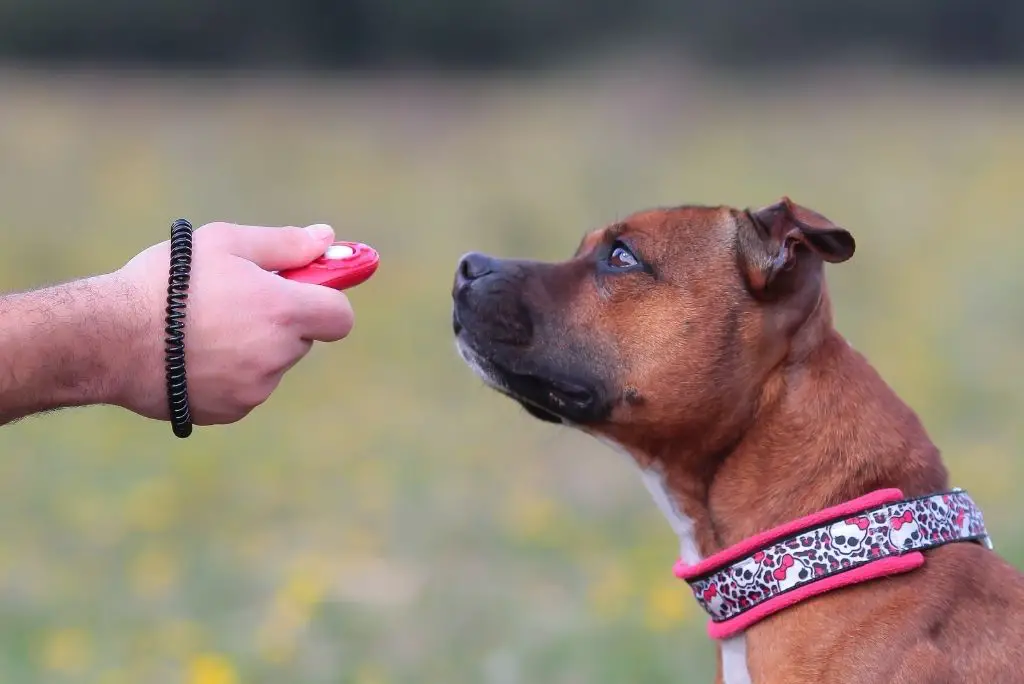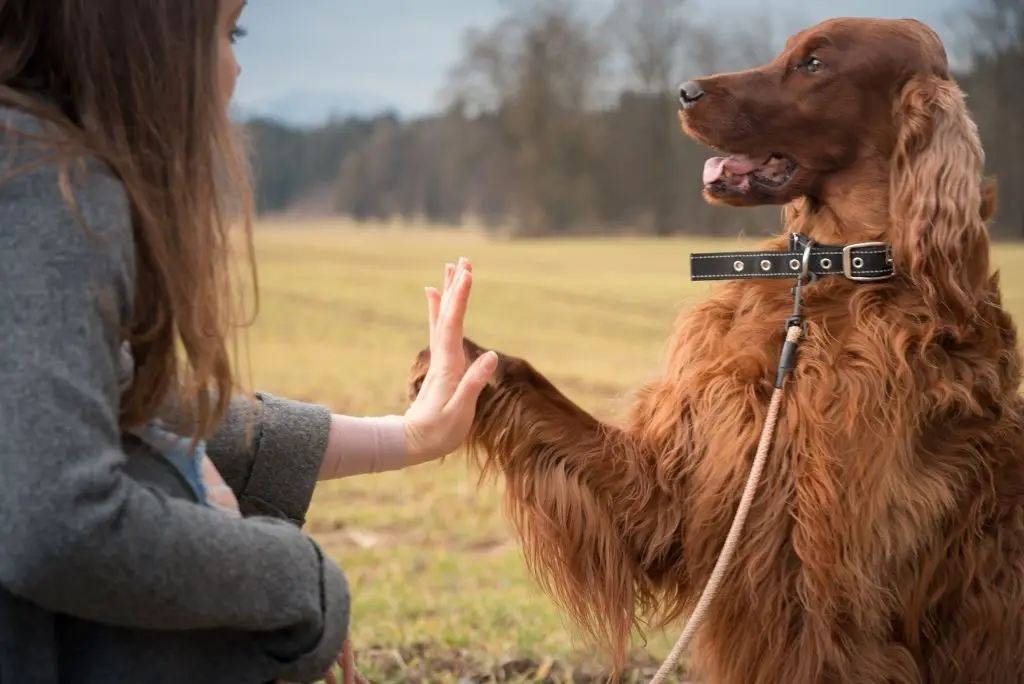Training is an essential part of any dog-owning journey as it’s key to building confidence, providing mental stimulation, and strengthening the bond between dogs and their owners. You can start training your dog at any age but the first struggle many dog owners have when starting the process is identifying the right dog training methods for their dog.
Although many training methods overlap in some areas, there are still some key differences between them, and even the professional dog trainer community doesn’t unanimously agree on which method is the best. This means it’s up to dog owners to understand their options for dog training and which ones they feel are a best fit.
Article contents
1. Positive Reinforcement
Positive reinforcement is a very popular dog training method and it’s all about rewarding good behavior and ignoring or redirecting bad behavior. This means that, whenever dogs do something their owners want them to do, they’re rewarded for it. And, whenever they show unwanted behavior they’re ignored or their owners will show them what they should do instead and be rewarded for that new behavior.
This training method requires a lot of consistency, meaning everybody in the household must to be on board with the training and use the same commands and reward system. These rewards may be in the form of treats, toys, praise, and touch.
One thing that is key about this training method is that there aren’t any harsh reprimands or physical punishment whenever dogs do something wrong. Because of this, this method is great for teaching dogs new tricks and commands but requires some extra patience when correcting unwanted behavior.
2. Clicker Training
Clicker training is also based on the same principles as positive reinforcement in the sense that it focuses on rewarding good behavior. However, what sets this method apart from positive reinforcement is that it relies on a device that is called a clicker. The training clicker is used to make a quick, sharp noise that signals to dogs when they’ve done something right. This makes it a lot easier to signal the exact behavior you want to reward, shape new behaviors and add verbal cues.
But before applying this training method, trainers must first condition their dogs to understand that a click means that a reward is coming their way. Only then can dogs associate the behavior with a click and a reward. Much like with positive reinforcement, clicker training is also great at teaching new behaviors but not as effective when it comes to correcting unwanted ones.

3. Scientific Training
Scientific training relies on information that is continually building and being updated which makes it difficult to define. But, at its core, it aims to understand dogs’ nature, how they’re conditioned and how effective rewards and punishments are. It’s such a broad method that it’s tricky to explain the methodology because there isn’t a clearly defined one. It picks up on a lot of the techniques used in other types of training. This training method mostly relies on using positive reinforcement techniques and some forms of punishment.
However, the bottom line, and what makes it different is the fact that, before trying to correct any behavior, everything about it must be understood. Trying to understand the underlying cause of it means that whoever uses this method needs to stay updated on the latest studies and do quite a good amount of research. This type of training is best left to professional dog trainers as it’s frequently overwhelming for dog owners to try to apply it themselves.
4. Relationship-Based Training
The relationship-based dog training method ends up combining different training methods but the biggest difference from the other methods is that it’s driven by the bond between dogs and their owners. This means that, although owners might not be able to start using this training method from the get-go, it’s likely that, as the bond with their dogs progresses, they’ll start using this training method.
In relationship-based training, whoever is the trainer should know how to read dogs’ body language, what rewards motivate them the most and how can they meet the dogs’ basic needs before each training session. This training method also works on controlling a dog’s environment to limit possible unwanted behaviors and slowly build on previous successful training. This way, the trainer is always setting the dog up for success.
5. Electronic Training
Electronic training is also called e-collar training because it relies on the use of electronic collars, frequently called dog training collars. These collars deliver a shock whenever a dog is showing unwanted behavior. Most of the time, this training method is used for training at a distance, when it’s not possible to use a leash.
It’s a very popular method to get dogs to stop barking whenever they’re home alone or to prevent them from running out of a property when they’re off-leash by using an invisible dog fencing mechanism. however, because this method relies on punishing bad behavior instead of rewarding good behavior, dogs only learn what not to do, rather than what they should do instead. Besides, constant punishment can create anxiety issues in dogs, resulting in even more problems.

6. Mirror Training
Mirror training (also called model-rival training) relies on a dog’s natural instincts to learn from their peers by using them as a model for how they should behave. Therefore, the idea is to provide a model for good behavior and reward dogs for mimicking it. This means that a trainer might have another human act as the model and praise them for completing tasks on command or scolding them for unwanted behavior. Then, through observation the dog learns what to do.
Another way to use this dog training method is by having a rival to compete with for resources. Here, the model will act as the rival and compete with the dog to do the right task to get the reward. This is supposed to encourage the dog to pick up on the task and accomplish it quicker than the model. Some dog trainers prefer using this method as they find it more natural as it’s closer to how dogs would learn from each other when in a pack.
7. Dominance Training
Dominance training is also known as alpha dog training and it relies on the pack concept that works by creating dominant and submissive relationships between pack members. The theory behind this dog training method suggests that dogs follow a strict social hierarchy and see their human families as their pack, much like what we see today in wolf packs. This training method focuses on showing dogs that they need to respect their owners as the alpha and adopt a submissive role.
The techniques used in this method require a good understanding of dogs’ body language to be able to predict what they’re about to do and prevent unwanted behavior by responding accordingly. It requires the owner to project confidence and authority through a series of actions such as being the first to eat and to enter or leave a room.
The main focus is to let dogs know that their owners are in charge and dogs should be submissive. This means avoiding any kind of behavior that may signal to your dog that you’re equal in the relationship and this means not allowing your dog on the bed or couch and not getting down to your dog’s eye level. Although this dog training method can avoid unwanted behaviors, many dog trainers find this method outdated. Besides, dominance training requires constant reinforcement which can be difficult and even lead to dangerous situations.
Making sense of it all
With so many dog training methods to choose from, it may seem hard to pick the best one. And don’t think you need to stick to just one training method, you can apply different ones depending on the situation. However, try to stay away from methods that rely on punishment as studies have shown that this kind of training can be harmful to dogs and not nearly as effective as using a rewarding system.
Whenever in doubt, ask your vet for help with making a training plan for your dog or for a reference of a great dog trainer or behaviorist to guide you.
